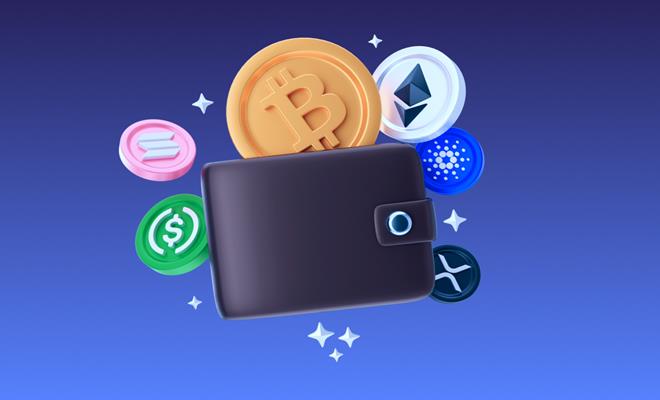
Understanding Crypto Wallets: Secure Your Digital Assets in the Blockchain Era
As digital assets like cryptocurrencies 📉📈 continue to gain mainstream adoption, many beginners and casual investors fail to grasp one crucial aspect: crypto security. A common misconception is that the blockchain’s immutability guarantees complete protection. While blockchains provide transparency and tamper-resistance, you are ultimately responsible for securing your assets. 🧠
Think of it like this: Even if your bank has top-notch vaults, your leather wallet 👜 can still be stolen if you’re careless. Similarly, your crypto wallet can be compromised if you don’t understand how to protect it. This makes learning about crypto wallet types and best practices absolutely essential. 🛡️
💡 What Are Cryptocurrencies and Blockchain?
Cryptocurrencies are digital currencies that use cryptography for security and rely on blockchain technology to function. 🧾 Unlike traditional fiat currencies 💵 controlled by central banks, cryptocurrencies operate on decentralized networks—also known as Distributed Ledger Technology (DLT).
Blockchains are immutable, meaning once a transaction is confirmed, it becomes a permanent part of the ledger. But contrary to popular belief, your crypto isn’t actually stored in the wallet. Instead, wallets serve as a tool to interact with the blockchain by managing your cryptographic keys. 🔑
🧠 How Do Crypto Wallets Work?
A crypto wallet is essentially software or hardware that lets you send, receive, and store cryptocurrencies. When you set up a wallet, it generates two key components:
- Private Key – This is like your master password and grants access to your funds.
- Public Key – This acts as your wallet address, allowing others to send you crypto.
🔑 Private Keys: Your Master Password
The private key is a randomly generated string of characters or a seed phrase (typically 12 or 24 words). It’s the only way to authorize transactions. Some wallets also support biometric authentication like fingerprints. 🧬
⚠️ Never share your private key. Anyone with it can access and steal your funds. If your device is lost or stolen, you can still restore your wallet—as long as you have the seed phrase or private key backed up. 🔁
📬 Public Keys: Share to Receive
Your public key is derived from your private key and is used to generate your wallet address. It’s safe to share and allows others to send crypto to you. 💸 Many people post their addresses on websites or social media to receive tips or donations.
All blockchain transactions are transparent, but using a new wallet address for each transaction can help preserve your privacy. 🕵️
📦 Types of Cryptocurrency Wallets
There are multiple types of wallets designed for different levels of convenience, risk tolerance, and usage. Here's a breakdown of the most common ones:
1️⃣ Hardware Wallets (Cold Wallets) 🧊
Hardware wallets are physical devices that store your private keys offline, such as Ledger or Trezor. Since they are not connected to the internet, they are highly secure and immune to online hacks, phishing attacks, and malware. 🔒
These wallets are ideal for long-term storage and large holdings. However, they require more technical knowledge and a USB connection to operate. 🏦
2️⃣ Software Wallets (Hot Wallets) 🔥
Software wallets are apps or browser extensions that remain connected to the internet. This makes them convenient but more susceptible to cyber threats. They are best suited for active traders and everyday crypto transactions. 📲
Custodial vs Non-Custodial: Many exchange wallets (like Coinbase) are custodial—meaning the platform holds your private keys. With non-custodial wallets (like MetaMask or Trust Wallet), you maintain full control. Remember: “Not your keys, not your coins.” 🗝️
Tip: Keep small amounts in hot wallets for convenience and move your major holdings to cold storage. 🧯
3️⃣ Paper Wallets 📄
Paper wallets are physical printouts of your private and public keys. They offer maximum offline security—as long as the paper is stored in a safe place. 🔐 Some people engrave their keys on metal for extra durability. 🪵
This method is highly secure but less convenient. If you value maximum isolation from digital threats, this option might suit you well.
✅ Final Thoughts: How to Choose the Right Wallet
Crypto wallets are essential tools for managing your digital assets—but they don’t actually store coins. Instead, they control access to the blockchain through cryptographic keys. There is no perfect wallet for everyone; the right choice depends on your individual needs. 🔍
- 🧊 Hardware Wallets: Best for long-term investors and large asset storage.
- 🔥 Software Wallets: Perfect for daily transactions and beginners.
- 📄 Paper Wallets: Ideal for maximum offline security and long-term cold storage.
No matter which wallet you choose, always follow good security practices: use strong passwords, enable two-factor authentication (2FA), backup your seed phrases, and stay informed about the latest threats. 🧠💼
Your crypto is only as secure as you make it—take control of your digital wealth today! 🚀